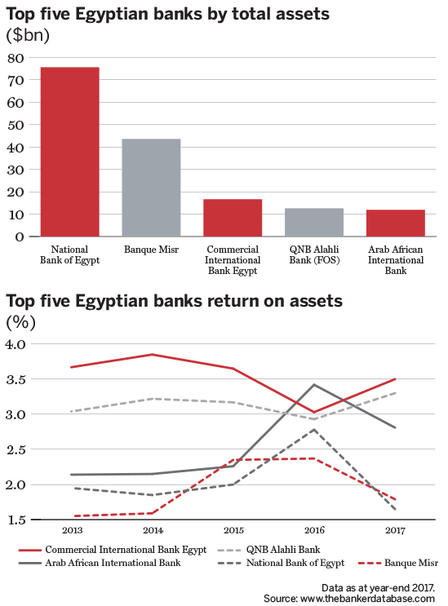Since the revolution in 2011, the top Egyptian banks have been steadily strengthening their balance sheets. However, 2017 was not kind to the country’s two largest banks.
Egypt has moved up six places in the World Economic Forum’s 2018 Global Competitiveness Index, to 94 out of 140 countries. But it still ranks second to last in the Arab world, as issues remain with regards to macroeconomic stability, as well as difficult trade and customs tariffs regimes. It is ranked 99th in the financial system ranking.
Despite these challenges, Egyptian banks have been gradually building up their assets since the revolution gripped the country in 2011. The top five banks have increased their balance sheets by more than 40%, from a total of $113bn to $160bn. The country’s largest lend, National Bank of Egypt (NBE), has led the charge, boosting its balance sheet by an impressive 47% between 2011 and 2017.
However, 2017 was not kind to the two largest banks – NBE and Banque Misr – following the government’s decision to float the currency in November 2016, which led to soaring inflation. NBE’s assets dropped by almost 5%, whereas Banque Misr declined by 10%. As a result, Egypt saw the biggest decrease in assets by country in The Banker’s 2018 Top 1000 World Banks ranking.
Three of the top five banks – NBE, Banque Misr and Arab African International Bank – also recorded drops in profitability in 2017, as indicated by return on assets.
All data sourced from www.thebankerdatabase.com



